|
Books Should Be Free Loyal Books Free Public Domain Audiobooks & eBook Downloads |
|
|
Books Should Be Free Loyal Books Free Public Domain Audiobooks & eBook Downloads |
|
Religion |
|---|
|
Book type:
Sort by:
View by:
|
By: Elliott O’Donnell (1872—1965) | |
|---|---|
 Animal Ghosts
Animal Ghosts
Summary: This is a collection of ghost stories in which the antagonists are various animals. Divided up into chapters of ghost sightings by each group of animals, you will hear of hauntings by dogs, cats, birds, jungle animals, etc. (Summary by Allyson Hester) | |
By: Emanuel Swedenborg (1688-1772) | |
|---|---|
 Soul or Rational Psychology
Soul or Rational Psychology
Swedenborg, Emanuel, 1688-1772, was born in Stockholm, Sweden and died in London, England. He was a voluminous writer of scientific treatises as well as prophetic works such as Archana Caelestia and The Divine Providence. He said he had encountered supranational agencies and communicated with angels. This is a recording of the 1849 translation of his 1743 book The Soul or Rational Psychology Latin. He took his cue from Aristotle's De Anima. A few quotes It has been shown above that the harmonies... | |
By: Émile Zola (1840-1902) | |
|---|---|
 Rome
Rome
The Abbe Pierre Froment, after his experiences in Lourdes, has written a book expressing a vision of a new enlightened papacy. He visits Rome to defend this book against condemnation and seeks audience with the Pope. He is introduced to aristocratic and ecclesiastical society, and during his three months' stay has the opportunity to reflect on the historical position of the "Eternal City", as well as its future and that of the Roman Catholic Church, reflections imbued with Zola's deep skepticism and his modernistic views... | |
 Lourdes
Lourdes
This book describes a five day national pilgrimage to the holy shrine of Lourdes, where miracle cures are hoped for. The central character is a priest, Pierre, whose faith is faltering. He is accompanying his childhood sweetheart who has been stricken with paralysis and whose faith is strong. In the background of the great irony of this relationship, there are numerous sub-plots, some tragic, some whimsical, involving a large number of characters, set in the midst of organised chaos in the pilgrimage site. Through Pierre's mental and spiritual experiences Zola explores the role of religious faith in a society coming to terms with science and reason. - Summary by Peter Tucker | |
By: Emma Leslie (1837-1909) | |
|---|---|
 Sailor's Lass
Sailor's Lass
On a dark and story night, the Coombers find a little girl. Who is she? | |
By: English Revised Version | |
|---|---|
 Bible (ERV) NT 02: Mark
Bible (ERV) NT 02: Mark
The Gospel according to Mark, also called the Gospel of Mark, or simply Mark, is the second of the four canonical gospels and of the three synoptic Gospels. It tells of the ministry of Jesus from his baptism by John the Baptist, his Transfiguration on a mountain, his describing of the Greatest Commandments, to his death, burial, and the discovery of his empty tomb. There is no miraculous birth or doctrine of divine pre-existence, nor, in the original ending, any post-resurrection appearances of Jesus... | |
 Bible (ERV) 01: Genesis
Bible (ERV) 01: Genesis
The Book of Genesis is the first book of the Hebrew Bible and the Christian Old Testament.Tradition credits Moses as the author of Genesis, as well as Exodus, Leviticus, Numbers and most of Deuteronomy, but modern scholars increasingly see them as a product of the 6th and 5th centuries BCE. - Summary by Glenn O'Brien | |
 Bible (ERV) NT 01: Matthew
Bible (ERV) NT 01: Matthew
The Gospel According to Matthew is one of the four canonical gospels, one of the three synoptic gospels, and the first book of the New Testament. The narrative tells how the Messiah, Jesus, rejected by Israel, finally sends the disciples to preach his Gospel to the whole world. - Summary by Glenn O'Brien | |
By: Ethel J. Rosenberg (1858-1930) | |
|---|---|
 A Brief Account of the Bahai Movement
A Brief Account of the Bahai Movement
“Many believe that we, in this century,” writes Ethel Rosenberg, “ are witnessing the dawn of a new spiritual epoch or era. A renewal of the Spirit is making itself felt in the Churches and in the religious and social life of all lands. This is in harmony with the teachings of the Bahais, and of their Great Leaders, now represented by Abdul Baha the ‘Servant of God,’ known to the outside world as Abbas Effendi. Once again, the Light is shining forth from that land which may indeed be called... | |
By: Etheria | |
|---|---|
 Pilgrimage Of Etheria
Pilgrimage Of Etheria
This late fourth century common era narrative of a Christian pilgrimage is the earliest such text which survives to us. It is an important source of information about early Christian practices. This book has an extended introduction which provides invaluable context and summaries, though some of it is a bit scholarly and dry. The text is damaged with some parts missing; missing parts will be designated in this recording by this verbal usage: “dot dot dot dot” . More information: Egeria, Etheria or Aetheria was a woman, widely regarded to be the author of a detailed account of a pilgrimage to the Holy Land... | |
By: Eusebius of Caesarea (263-339 AD) | |
|---|---|
 Eusebius' History of the Christian Church
Eusebius' History of the Christian Church
Eusebius presents the history of the Church from the apostles to his own time, with special regard to the following points:1. the successions of bishops in the principal sees2. the history of Christian teachers3. the history of heresies4. the history of the Jews5. the relations to the heathen6. the martyrdoms. | |
By: Eva K. Betz (1897-1968) | |
|---|---|
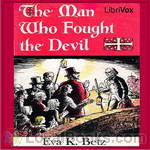 The Man Who Fought the Devil
The Man Who Fought the Devil
Jean Marie Vianney always found it hard to learn. In fact, he made history by receiving a zero as his examination mark after his first year of study in the seminary. But with determination, and with God’s help, he won through. He became a hard-working parish priest and then a pastor – the beloved Cure of Ars.Week by week, year by year, his fame as an advisor and a confessor grew. People flocked from great distances to his little church, and privately, among themselves, they called him “saint”... | |
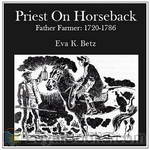 Priest on Horseback - Father Farmer: 1720 - 1786
Priest on Horseback - Father Farmer: 1720 - 1786
A historical novel for children, which tells the story of several months in the life of the then famous Father Farmer, as he traveled a Mass circuit in Pre-Revolutionary, Colonial America. He faced much danger and and adventure, in order to provide the Mass and the Sacraments to Catholics who had not seen a priest in years.Father Farmer was a real life missionary priest during the 1700’s in what is now New England. In 1779 he was appointed as one of the first trustees of the University of Pennsylvania. He also had a reputation as a philosopher and astronomer in his time, and was a member of the American Philosophical Society. (Introduction by Maria Therese)No on-line text available. | |
By: Eva Lecomte | |
|---|---|
 Paula the Waldensian
Paula the Waldensian
Into the home of an interesting but self-centered family in old France comes Paula, a young orphaned cousin, from the little village of Villar, in the Waldensian Valley. Though living very simply, tending cows, goats, sheep and rabbits, Paula has been brought up to know and love the Lord Jesus and read the Scriptures. Her Lord and His Word are the center of her life, and she can no more keep this good news all to herself than she can stop breathing or eating. This causes a good many complications, for her cousins' home was one where "religion" was a forbidden subject, never to be mentioned, and Paula soon found herself forbidden to read her own precious Bible... | |
By: Eva March Tappan (1854-1930) | |
|---|---|
 World’s Story Volume III: Egypt, Africa and Arabia
World’s Story Volume III: Egypt, Africa and Arabia
This is the third volume of the 15-volume series of The World’s Story: a history of the World in story, song and art, edited by Eva March Tappan. Each book is a compilation of selections from prose literature, poetry and pictures and offers a comprehensive presentation of the world's history, art and culture, from the early times till the beginning of the 20th century. Topics in Part III include Egypt, Northern, Western and Central Africa, South Africa and Arabia. - Summary by Sonia Cast list for The Death of Cleopatra: Dolabella: Tomas Peter Charmian: Monika M... | |
 World’s Story Volume II: India, Persia, Mesopotamia and Palestine
World’s Story Volume II: India, Persia, Mesopotamia and Palestine
This is the second volume of the 15-volume series of The World’s Story: a history of the World in story, song and art, edited by Eva March Tappan. Each book is a compilation of selections from prose literature, poetry and pictures and offers a comprehensive presentation of the world's history, art and culture, from the early times till the beginning of the 20th century. Topics in Part II include India, Siam, Afghanistan, Persia, Mesopotamia and Palestine. - Summary by Sonia Cast list for Sakoontala, or the lost ring: King: Tomas Peter First Attendant: Eva Davis Second Attendant: TJ Burns Child: lorda Sakoontala: Monika M... | |
 World’s Story Volume IX: England
World’s Story Volume IX: England
This is the ninth volume of the 15-volume series of The World’s Story: a history of the World in story, song and art, edited by Eva March Tappan. Each book is a compilation of selections from prose literature, poetry and pictures and offers a comprehensive presentation of the world's history, art and culture, from the early times till the beginning of the 20th century. Part IX deals with the first part of the history of England, from the early times till the reign of the Tudor kings and queens... | |
By: Evangelical Lutheran Church in America | |
|---|---|
 Advent readings and spoken hymns
Advent readings and spoken hymns
Advent readings and spoken hymns for each of the Four Sundays of the Advent Season. | |
By: Evelyn Underhill (1875-1941) | |
|---|---|
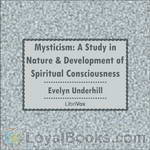 Mysticism: A Study in Nature and Development of Spiritual Consciousness
Mysticism: A Study in Nature and Development of Spiritual Consciousness
The book provides an introduction to the subject of mysticism, presenting it from the point of view of metaphysics, psychology, and symbolism. It examines the different stages of development a mystic typically experiences. | |
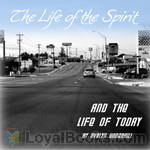 The Life of the Spirit and the Life of Today
The Life of the Spirit and the Life of Today
Underhill emphasizes the practical, here-and-now nature of spiritual life. She argues that spirituality is a genuine and abiding human fact, and that any complete description of human life must find room for the spiritual factor, and for the religious life in which it finds expression. | |
By: Father Benoit Valuy (1808-1869) | |
|---|---|
 Fraternal Charity
Fraternal Charity
This short treatise comes from a work by the Roman Catholic priest Father Valuy, S.J., and bears an imprimatur. It was written for members of religious orders; yet, as the translator notes, it may be of interest to others, for "love, the sunshine of existence, is wanted everywhere." The first five chapters cover the fundamentals of fraternal charity. Chapters 6 through 17 discuss twelve characteristics of fraternal charity. Chapters 18 and 19 show how God manifests the virtue of charity to us most perfectly... | |
By: Father John Gerard (1564-1637) | |
|---|---|
 During the Persecution: Autobiography of Father John Gerard
During the Persecution: Autobiography of Father John Gerard
Fr. John Gerard was an English Jesuit priest who operated covertly in England during the Elizabethan era, during which the Catholic Church was subject to persecution. Gerard notably not only successfully hid from the English authorities for eight years before his capture but also endured extensive torture, escaped from the Tower of London, recovered and continued with his covert mission. After his escape to the Continent, he was instructed by his Jesuit superiors to write a book about his life... | |
By: Ferrar Fenton (1832-1920) | |
|---|---|
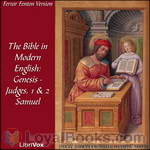 The Bible in Modern English: Genesis - Judges, 1 & 2 Samuel
The Bible in Modern English: Genesis - Judges, 1 & 2 Samuel
Work on the translation began in 1853 by a London businessman called Ferrar Fenton (1832–1920). The complete Bible was first published in 1903, though parts were published as separate volumes during the preceding 11 years. The translation is noted for a rearranging of the books of the Bible into what the author believed was the correct chronological order. In the Old Testament, this order follows that of the Hebrew Bible. The name of God was translated throughout the Old Testament as "The Ever-Living"... | |
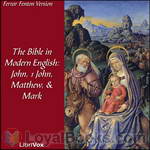 The Bible in Modern English, NT: John, 1John, Matthew, Mark
The Bible in Modern English, NT: John, 1John, Matthew, Mark
The ordering novelty in the New Testament is that it places the Gospel of John and the First Epistle of John at the beginning before the Gospel of Matthew, thus placing the Acts of the Apostles immediately after the Gospel of Luke. Work on the translation began in 1853 by a London businessman called Ferrar Fenton (1832–1920). The complete Bible was first published in 1903, though parts were published as separate volumes during the preceding 11 years. The translation is noted for a rearranging of the books of the Bible into what the author believed was the correct chronological order. His translation of the New Testament is based on the Greek text of Westcott and Hort. | |
By: Ferrar Fenton Bible (1832-1920) | |
|---|---|
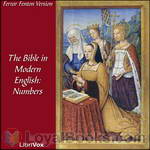 Numbers (FFB)
Numbers (FFB)
The record of the numbering of the nation of Israel, as well as the beginning of their "maturity" as they near the "promised land" of Canaan. (Introduction by Mark Penfold) | |
 Bible (Fenton) NT06-NT27: Romans to Revelation
Bible (Fenton) NT06-NT27: Romans to Revelation
Work on the translation began in 1853 by a London businessman named Ferrar Fenton . The complete Bible was first published in 1903, though parts were published as separate volumes during the preceding 11 years. The translation is noted for a rearranging of the books of the Bible into what the author believed was the correct chronological order. In the Old Testament, this order follows that of the Hebrew Bible. The name of God was translated throughout the Old Testament as "The Ever-Living". The Bible is described as "translated into English direct from the original Hebrew, Chaldee, and Greek languages... | |
By: Ferreol Girardey (1839-1930) | |
|---|---|
 Prayer: Its Necessity, Its Power, Its Conditions
Prayer: Its Necessity, Its Power, Its Conditions
Redemptorist Father Ferreol Girardey's book, which bears an imprimatur, is a broad introductory treatise on the subject of prayer. He discusses the power and necessity of prayer, explains why some prayers do not seem to be answered, and tells us how to make our prayers more acceptable to God. In particular, he instructs the reader on what to pray for and for whom to pray. He also details the conditions necessary for efficacious prayer and explains the times when it is most suitable to pray. Father Girardey includes numerous lessons from the gospel on prayer and offers selections from Meditations for Every Day of the Year by Redemptorist Father Louis Bronchain. | |
By: Flavius Philostratus | |
|---|---|
 The Life of Apollonius of Tyana
The Life of Apollonius of Tyana
Apollonius of Tyana (ca. 40-120 AD) was a Greek Pythagorean philosopher and teacher. He hailed from the town of Tyana in the Roman province of Cappadocia in Asia Minor. His date of birth is a matter of conjecture as some say he was roughly a contemporary of Jesus.After Apollonius' death his name remained famous among philosophers and occultists. In a "novelistic invention" inserted in the Historia Augusta, Aurelian, at the siege of Tyana in 272, was said to have experienced a visionary dream in which Aurelian claimed to have seen Apollonius speak to him, beseeching him to spare the city of his birth... | |
By: Fr. Martin Von Cochem (1630-1712) | |
|---|---|
 Four Last Things: Death, Judgement, Hell, Heaven
Four Last Things: Death, Judgement, Hell, Heaven
We are all going to die! Heaven is our ultimate destination. Sadly not all are bound for Glory. Many well intentioned people are of the belief that Heaven and Glory are automatic rewards for living on earth. The author of this book, Father Martin Von Cochem points out the fallacy of such thinking. He pulls no punches stressing the necessity of living our best lives for God. Sufferings on earth are part of the equation, He describes hell in frightening detail for all who think it is a non issue, We have to work to get a Heavenly reward... | |
By: Fr. Pierre-Jean De Smet (1801-1873) | |
|---|---|
 De Smet's Letters and Sketches, 1841-1842
De Smet's Letters and Sketches, 1841-1842
In 1841 and 1842, Fr. Pierre-Jean DeSmet traversed the wide and wild American West to bring the gospel to the Flatheads, who had sent multiple delegations from Montana to St. Louis, repeatedly requesting a Blackgown priest to instruct them in Christianity. Fr. DeSmet’s letters to his Jesuit Superiors show his heroic religious dedication and selflessness, as he recounts fatigues, hunger, thirst, and dangers that rival those of the apostle St. Paul. He also makes intelligent observations of geography, geology, weather , and the interesting customs of the different tribes he meets... | |
By: Frances Alice Forbes (1869-1936) | |
|---|---|
 Life of St. Vincent de Paul
Life of St. Vincent de Paul
Vincent De Paul [c. 1581 - 1660] was a man renowned during his own century for his compassion, humility and generosity. During the days when galleys were part of any countries' war machine and these galleys were rowed by convicts who were in reality slaves, Vincent's special call was to provide what spiritual comfort he could to these wretched men. When a young man he himself had been captured by Turkish pirates, who brought him to Tunis and sold him into slavery, so he had a special understanding of their lot... | |
 Saint Athanasius: The Father of Orthodoxy
Saint Athanasius: The Father of Orthodoxy
A short and rather old fashioned biography a great saint. Don't expect subtlety; it's unapologetic hagiography. The saint is presented as a figure of pristine brilliance, courage and integrity and his persecutors as conniving villains. But to those who appreciate what was at stake in the controversy, Athanasius is indeed a God-sent hero. This is an informative, if quaint, introduction to a fascinating figure in history. | |
By: Frances E. W. Harper (1825-1911) | |
|---|---|
 Sowing and Reaping
Sowing and Reaping
This novel is subtitled A Temperance Story, which identifies explicitly the focus of the work. Frances Harper is a Christian moralist and uses her writings for didactic purposes. Here she contrast two couples, one, Belle and Paul, who do not drink and whose lives are happier and more productive, and the other, Jeanette and Charles, who lives are destroyed by the demon rum. | |
By: Frances Hodgson Burnett (1849-1924) | |
|---|---|
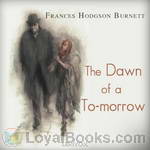 The Dawn of a To-morrow
The Dawn of a To-morrow
A wealthy London business man takes a room in a poor part of the city. He is depressed and has decided to take his life by going the next day to purchase a hand gun he had seen in a pawnshop window. The morning comes with one of those 'memorable fogs' and the adventure he has in it alters his decisions and ultimately his life. | |
By: Frances Ridley Havergal (1836-1879) | |
|---|---|
 Coming to the King
Coming to the King
A collection of poems by Frances Ridley Havergal and others, all describing different aspects of our walk with God, from 'Coming to the King' to 'Under the Shadow.' | |
By: Francis Asbury (1745-1816) | |
|---|---|
 Journal of Francis Asbury, Volume I
Journal of Francis Asbury, Volume I
As one of the first two bishops of the Methodist church in America and one of the most well-known circuit riders during the spread of Methodism, Francis Asbury kept a journal of his travels and activities. His journal begins with his prayerful decision to come to America in 1771 and continues to December of 1815, a few months before his death. In the meantime, we travel with Rev. Asbury across the ocean, over mountains, through rivers, and up and down the whole length of the fledgling United States of America. - Summary by Devorah Allen | |
 Journal of Francis Asbury, Volume II
Journal of Francis Asbury, Volume II
As one of the first two bishops of the Methodist church in America and one of the most well-known circuit riders during the spread of Methodism, Francis Asbury kept a journal of his travels and activities. His journal begins with his prayerful decision to come to America in 1771 and continues to December of 1815, a few months before his death. In the meantime, we travel with Rev. Asbury across the ocean, over mountains, through rivers, and up and down the whole length of the fledgling United States of America. Summary by Devorah Allen | |
 Journal of Francis Asbury, Volume III
Journal of Francis Asbury, Volume III
As one of the first two bishops of the Methodist church in America and one of the most well-known circuit riders during the spread of Methodism, Francis Asbury kept a journal of his travels and activities. His journal begins with his prayerful decision to come to America in 1771 and continues to December of 1815, a few months before his death. In the meantime, we travel with Rev. Asbury across the ocean, over mountains, through rivers, and up and down the whole length of the fledgling United States of America. - Summary by Devorah Allen | |
By: Francis Bacon (1561-1626) | |
|---|---|
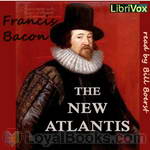 The New Atlantis
The New Atlantis
In 1623, Francis Bacon expressed his aspirations and ideas in New Atlantis. Released in 1627, this was his creation of an ideal land where people were kind, knowledgeable, and civic-minded. Part of this new land was his perfect college, a vision for our modern research universities. Islands he had visited may have served as models for his ideas. | |
By: Francis Cassilly (1860-1938) | |
|---|---|
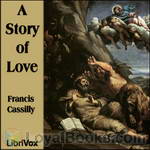 A Story of Love
A Story of Love
This is not a love story, but the story of love, a love which every man and woman was created to experience, a love so intense and fulfilling that it scarcely seems possible to grasp, yet one that is offered to every human person who opens his heart and mind to its beauty and wonder. This is a love that so many of our forefathers have found and even now enjoy, but which so many of us still seek. The American Jesuit Father Cassilly opens our eyes to this love, the unifying and personal love between the human person and his Creator... | |
By: Francis Edward Tourscher (1870-1939) | |
|---|---|
 Work Of The Sisters During The Epidemic Of Influenza October, 1918
Work Of The Sisters During The Epidemic Of Influenza October, 1918
In 1918 over 2,000 Roman Catholic nuns left their convents in the Philadelphia area to nurse the sick and dying of the influenza epidemic. Twenty-three of the sisters died because of their ministrations. This is an account of their heroic work published in the American Catholic Historical Society Of Philadelphia, 1919. “Gathered and arranged from reports of personal experiences of the sisters and contributed by request of the compiler.” The compiler/author was an academic/priest at Villanova University in Pennsylvania. Since there are no chapter headings, this recording uses the section headings of the book. - Summary by David Wales and book's subtitle | |
By: Francis J. Finn (1859-1928) | |
|---|---|
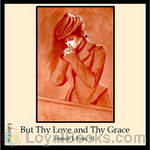 But Thy Love and Thy Grace
But Thy Love and Thy Grace
Father Finn's beautiful little tale can be read in an hour or so, but it conveys a lesson which ought to be of longer duration. The interest of the story is chiefly theological, turning, as it does, on the refining and ennobling effects of frequent confession and communion on the soul; yet it is so simply put that any child can understand it.Regina O'Connell is a poor factory girl whose earnings support herself and her bedridden sister. She is simplicity itself—one of those rare beings whom unselfishness and genuine humility make heroines in the true sense of the word... | |
 That Office Boy
That Office Boy
A new story by Father Finn! It will be glad news to many to learn that Father Finn has found time from his many duties to write a new story, and such a story! From the opening chapter to the last page of the book the interest never lags. The plot is very simple, turning on a prize contest for pianos offered by certain newspapers to the school, society or club that receives the greatest number of coupons. Of course, this calls for keen competition on the part of the young people of the city, and it is in this contest that Michael Desmond, "That Office Boy," figures prominently... | |
 Mostly Boys: Short Stories
Mostly Boys: Short Stories
A collection of tales about real life boys in every walk of life. They are redolent of the breezy spirit of healthy, jovial boyhood, and permeated with the author’s best brand of humor. (The Publishers Trade List Annual 1917) The author, Francis J. Finn, S.J., was a Catholic priest who wrote a series of 27 popular Catholic novels for young people during the late 1800’s and early 1900’s. His best known work is “Tom Playfair”. | |
By: Francis J. Finn, S.J. (1859-1928) | |
|---|---|
 Percy Wynn, or Making a Boy of Him
Percy Wynn, or Making a Boy of Him
In this volume, which follows the author's popular book "Tom Playfair", a new boy is just arriving at St. Maure's boarding school. Percy Wynn has grown up as the only boy in a family of 10 girls. He has never played with boys before, and no one looking at him for a moment would hesitate to set him down as "Mamma's darling". Tom and his friends befriend Percy, and attempt to repair his formal manners, and "make a boy of him". | |
 Harry Dee; or Making it Out
Harry Dee; or Making it Out
Harry Dee, a nervous, sensitive boy, given to somnambulism, arrives at St. Maure's following his experiences involving the murder of his rich uncle. Tom Playfair and Percy Wynn help to restore Harry to his former self, which includes solving "The Mystery of Tower Hill Mansion." This is the last book of the three of Fr. Finn's famous trio. | |
 Claude Lightfoot, or How the Problem Was Solved
Claude Lightfoot, or How the Problem Was Solved
Most of the boys in the Catholic school called Milwaukee College are engrossed with baseball and keeping up with their studies. When twelve year old Claude Lightfoot is transferred into the school, he has a rocky time of it. While Claude excels in baseball and other playground activities, he also has a knack of annoying the other boys, particularly one who is a mean bully. And though Claude is mentally bright, his hyperactive classroom behavior is a trial to his teacher. The problem that must be solved is whether Claude can settle down to become a responsible young man capable of self control... | |
 Ada Merton
Ada Merton
The conversion of an indifferent father and mother, through the death of an only child, is well told in another story by Fr Finn, S.J. entitled Ada Merton. | |
 Ethelred Preston; or, The Adventures of a Newcomer
Ethelred Preston; or, The Adventures of a Newcomer
Ethelred Preston is a story for boys written by Fr. Finn, SJ. The hero, Ethelred, while on his way to college, meets Packy Jarloe, a peddler, who induces him to change places with himself, so that Packy goes to Henrytown College, announcing himself as Ethelred Preston, while Ethelred takes Packy's peddler's pack and sets out on the road to make his fortune There is a mixture of the ludicrous and serious in what follows, but the fraud is finally discovered and Ethelred after much suffering finds himself installed as a regular student and universal favorite at Henrytown College. | |
By: François Norbert Blanchet (1795-1883) | |
|---|---|
 Historical Sketches of the Catholic Church in Oregon, During the Past Forty Years
Historical Sketches of the Catholic Church in Oregon, During the Past Forty Years
This book is a first-hand account of the experiences of Fr. Norbert Blanchet and his fellow missionaries to Oregon in the 1830’s and 1840’s. The original duo, Fr. Blanchet and Fr. Demers, had incredible adventures traveling across Canada by canoe, horseback, and river raft to arrive at the Hudson’s Bay Company Fort at Vancouver, Washington. From there, they energetically and joyfully established churches in the Willamette valley, along the Columbia River, and into present day Washington state and British Columbia... | |
By: François-Xavier Gautrelet (1807-1886) | |
|---|---|
 Christian Nurse and Her Mission in the Sick Room
Christian Nurse and Her Mission in the Sick Room
François-Xavier Gautrelet was a French Jesuit priest whose legacy survives as being the inspiration and originator of the Apostleship of Prayer in 1844. In this volume he gives an extensive spritual and practical guide to nurses and others who minister to the sick and dying. The translator, John Mason Neale, was a British Anglican who served as warden ot Sackville College, an almshouse at East Grinstead for many years. In 1854 he co-founded the Society of Saint Margaret, an order of women in the Church of England dedicated to nursing the sick... | |
By: Frank W. Boreham (1871-1959) | |
|---|---|
 Handful of Stars
Handful of Stars
This is the second of a five volume series called "Texts That Made History". As with the first volume, "A Bunch of Everlastings", each chapter tell a brief biography with emphasis on the text from scripture that was significant in the life of each. It is biography and Bible study expertly woven together to produce interesting and inspirational stories. | |
 Mountains in the Mist
Mountains in the Mist
Frank Boreham was a well known preacher who served in England, Australia, and New Zealand. He published dozens of books and thousands of editorials during his lifetime, with no sign of slowing down, even up until his death at age 88. He wrote with a distinctive style, seeming to be able to draw a spiritual lesson out of any conceivable topic.In this volume, Boreham invites us to view spiritual truths as we would look upon beautiful mountains in the distance, with a spirit of wonder and humility, rather than with meticulous reasoning and analysis. Summary by Devorah Allen | |
 Bunch of Everlastings
Bunch of Everlastings
A collection of brief biographies and the text from scripture that was significant in the life of each. It is biography and devotional Bible study expertly woven together to produce interesting and inspirational stories. | |
 Silver Shadow, and Other Day Dreams
Silver Shadow, and Other Day Dreams
Frank Boreham was a well known preacher who served in England, Australia, and New Zealand. He published dozens of books and thousands of editorials during his lifetime, with no sign of slowing down, even up until his death at age 88. He wrote with a distinctive style, seeming to be able to draw a spiritual lesson out of any conceivable topic. Boreham admits that this volume is but a collection of his reflections on things. But he hopes that by viewing the reflections, we will be more apt to take notice of the things themselves than if we had looked directly at them in full light of day. - Summary by Devorah Allen | |
 Other Side of the Hill, and Home Again
Other Side of the Hill, and Home Again
Frank Boreham was a well known preacher who served in England, Australia, and New Zealand. He published dozens of books and thousands of editorials during his lifetime, with no sign of slowing down, even up until his death at age 88. He wrote with a distinctive style, seeming to be able to draw a spiritual lesson out of any conceivable topic.In this volume, Boreham challenges us to view things from a perspective we may not be accustomed to–from the other side of the hill, as it were–and then to return home with a fresh outlook. - Summary by Devorah Allen | |
 Casket of Cameos
Casket of Cameos
Frank Boreham was a well known preacher who served in England, Australia, and New Zealand. He published dozens of books and thousands of editorials during his lifetime, with no sign of slowing down, even up until his death at age 88. He wrote with a distinctive style, seeming to be able to draw a spiritual lesson out of any conceivable topic. This is the third volume of his "Texts That Made History" series, in which he sketches the lives of eminent Christians throughout the ages and the specific scriptures from which they each drew their inspiration and strength. | |
 Rubble and Roseleaves, and Things of That Kind
Rubble and Roseleaves, and Things of That Kind
Frank Boreham was a well known preacher who served in England, Australia, and New Zealand. He published dozens of books and thousands of editorials during his lifetime, with no sign of slowing down, even up until his death at age 88. He wrote with a distinctive style, seeming to be able to draw a spiritual lesson out of any conceivable topic.In this volume, Boreham characterizes each chapter as neither sermons nor essays, but simply, as he calls them, "outbursts" or "wayward notions," and he presents them to us as if we were all gathered around a comfortable fire together. - Summary by Devorah Allen | |
 Luggage of Life
Luggage of Life
This collection contains 32 essays by the respected Baptist preacher Frank Boreham. Writing on topics that range from falling in love to eating sandwiches at a church meeting, Boreham seeks to encourage and inspire Christian believers around the world. Summary by Devorah Allen | |
 Faces in the Fire, and Other Fancies
Faces in the Fire, and Other Fancies
In this collection of essays, Frank Boreham shares with us his musings on how everyday items such as boots and linoleum, or a cozy fire, or even Nothing at all, can enrich our spiritual lives and draw us closer to our Heavenly Father. Summary by Devorah Allen. | |
 Uttermost Star, and Other Gleams of Fancy
Uttermost Star, and Other Gleams of Fancy
Frank Boreham was a well known preacher who served in England, Australia, and New Zealand. He published dozens of books and thousands of editorials during his lifetime, with no sign of slowing down, even up until his death at age 88. He wrote with a distinctive style, seeming to be able to draw a spiritual lesson out of any conceivable topic.In this volume, Boreham invites us to enter his book and his thoughts as if we were honored guests entering his home, with an evening of hospitality and fellowship before us. - Summary by Devorah Allen | |
 Golden Milestone
Golden Milestone
Frank Boreham was a well known preacher who served in England, Australia, and New Zealand. He published dozens of books and thousands of editorials during his lifetime, with no sign of slowing down, even up until his death at age 88. He wrote with a distinctive style, seeming to be able to draw a spiritual lesson out of any conceivable topic.In this volume, the author has "tried to point out a few of the things that make [the world] so loveable. If something I have said," he writes, "makes somebody somewhere more glad to be alive, I shall be inclined to forgive this truant pen of mine its inordinate garrulity." - Summary by Devorah Allen | |
By: Frederick Brotherton Meyer (1847-1929) | |
|---|---|
 Joseph: Beloved, Hated, Exalted
Joseph: Beloved, Hated, Exalted
I remember seeing the huge Matterhorn reflected, in its minutest details, in a small mountain lakelet, many miles distant; and similarly, the life of Jesus is remarkably mirrored in this touching story. In fact, there are scenes in the life of Joseph which probably foreshadow events that are timed to happen in the near future, and which depict them with a vividness and minuteness not to be found elsewhere on the page of Scripture. It is here only that we can fully realize what will take place when the Lord Jesus makes Himself known to his brethren according to the flesh, and they exclaim, "It is Jesus our brother!" (From the Preface) | |
 Directory of the Devout Life
Directory of the Devout Life
We can never allow the great objective facts of Christianity, and their attendant doctrines, to sink low on our horizon; but we must give equal prominence to the demands of Christ for a righteousness which shall exceed that of the Scribes and Pharisees, and a perfection which shall resemble that of God. We have no right to be content with saying "Lord, Lord;" we must do the things which He says. Of course, the right kind of obedience is impossible, apart from the Cross and the Spirit. We must be reconciled before we can become obedient children; we must be filled with the Spirit before "the fragrance of Christ" can be manifested through us in every place... | |
By: Frederick Denison Maurice (1805-1872) | |
|---|---|
 Prophets and Kings of the Old Testament
Prophets and Kings of the Old Testament
This is a collection of twenty-seven sermons on the Old Testament kings, from Saul to Zedekiah, and the prophets who spoke to them, from Samuel to Ezekiel. Moving in chronological order of the biblical events, this book could be a useful aid to studying this portion of the Bible. - Summary by Devorah Allen | |
By: Frederick William Faber (1814-1863) | |
|---|---|
 Kindness
Kindness
Father Frederick William Faber was a beloved spiritual writer, preacher, and superior of the Oratory of St. Philip Neri in London. An Oxford scholar and Anglican priest since 1839, Faber converted to Roman Catholicism in 1845 following his mentor John Henry (later Cardinal) Newman. During the 1850s, Father Faber published several popular spiritual books, which have been treasured by Catholics ever since: All for Jesus, Growth in Holiness, The Blessed Sacrament, The Creator and the Creature, The Foot of the Cross, Spiritual Conferences, The Precious Blood, and Bethlehem... | |
 Bethlehem
Bethlehem
There are several ways in which we may treat of the mysteries of the Three-and-Thirty Years of our dearest Lord. We may look at each of them singly, as it is in itself, full of grace and beauty, and distinctively unlike any other. Secondly, we may gather them up into departments, and call them the joyful, the sorrowful, and the glorious mysteries, the three sets differing thus from each other, and, in the unity of each set, each mystery having its own distinctness. Or, thirdly, we may view them as clustering in constellations, and yet these constellations unities, as the Childhood, the Hidden Life, the Public Ministry, the Passion, and the Risen Life or Great Forty Days... | |
By: Friedrich Bente [translator] (d. 1930) | |
|---|---|
 Book of Concord Preface
Book of Concord Preface
The Christian Book of Concord was published in 1580 as a collection of eleven documents: Three Ecumenical Creeds and eight documents from the Reformation Era. Here is the Preface to the entire work together with the Saxon Visitation Articles from 1592. | |
By: Friedrich Nietzsche (1844-1900) | |
|---|---|
 The Antichrist
The Antichrist
Save for his raucous, rhapsodical autobiography, Ecce Homo, The Antichrist is the last thing that Nietzsche ever wrote, and so it may be accepted as a statement of some of his most salient ideas in their final form. Of all Nietzsche’s books, The Antichrist comes nearest to conventionality in form. It presents a connected argument with very few interludes, and has a beginning, a middle and an end. | |
 The Joyful Wisdom
The Joyful Wisdom
The Joyful Wisdom (later translated as The Gay Science), written in 1882, just before Zarathustra, is rightly judged to be one of Nietzsche’s best books. Here the essentially grave and masculine face of the poet-philosopher is seen to light up and suddenly break into a delightful smile. The warmth and kindness that beam from his features will astonish those hasty psychologists who have never divined that behind the destroyer is the creator, and behind the blasphemer the lover of life. In the retrospective... | |
By: Friedrich von Hügel (1852-1925) | |
|---|---|
 Essays and Addresses on the Philosophy of Religion
Essays and Addresses on the Philosophy of Religion
Baron Friedrich von Hugel was a lay Catholic theologian whose work was influential during the rise of modernist thought. His Essays and Addresses on the Philosophy of Religion became a favorite work of later Christian writers C.S. Lewis and Flannery O'Connor. The book compiled previously written material into a single collection, divided into three parts: the first, on religion and theism in general; the second, on Christ's teachings and Christianity in general; the third, on the Catholic Church. - Summary by Dylan P. Straub | |
By: Fulke Greville (1554-1628) | |
|---|---|
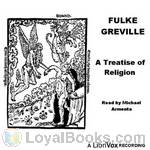 A Treatise of Religion
A Treatise of Religion
Part diatribe, part discourse, part sermon and part stand-up comedy, this is Fulke Greville's 114 stanza, verse-poem about religious hypocrisy. | |
By: G. A. McLaughlin (1851-1933) | |
|---|---|
 Saved and Kept: or How to Get Saved and How to Keep Saved
Saved and Kept: or How to Get Saved and How to Keep Saved
This little volume is by no means intended to be a theological work. Nor does it attempt to show the details of the Christian life. The author seeks to point out the principal means by which sincere souls may be saved and keep saved. It is intended to be a simple, direct exposition of the way of salvation, put in every-day language, with the earnest desire that ‘‘he that runneth may read,"’ and that the reader may be helped in reaching the goal, and in finding an abundant entrance into the City of God. With this single aim we launch this little book, praying that it may be helpful to some soul who seeks to know what God has for him. - Summary by G. A. McLaughlin | |
 Clean Heart
Clean Heart
"Much of the preaching and teaching of religion is in a theological dialect that is scarcely more intelligible to the people than a foreign language. Many pulpits need an interpreter as much as do the foreign missionaries among the heathen. The attempt of the writer is to put the matter of full salvation in a simple, direct way, that all may see the simplicity of a subject that is sometimes “darkened with words". It is an attempt to show that the experience of a clean heart is but the answer to a prayer that is both scriptural and reasonable. It is an attempt to furnish food for hungry souls...” | |
By: G. Campbell Morgan (1863-1945) | |
|---|---|
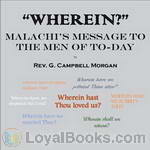 Wherein?
Wherein?
These studies in the book of Malachi were delivered as addresses to the students at Mr. Moody’s Bible School in Chicago, and then to my own congregation. They have also appeared in “The Record of Christian Work” in the United States, and in “Out and Out” in England. They are now sent out in a more permanent form, after careful revision, with the prayer that they may be used of God in calling His own children into the place of power without which form is nothing. (Introduction by G. Campbell Morgan) | |
 Practice of Prayer
Practice of Prayer
God has made prayer possible to us through Jesus. We can pray prevailingly only as we respond to the truths which create the possibility. The sphere of prayer includes the coming of the Kingdom of God and the provision of all the need of the saints. Thus all these constitute an integral part of the subject of the practice of prayer. Prayer is only possible to the revealed Father through the mediating Son by the inspiring Spirit. Prayer is only a prevailing power as, in the life, the child of God is loyal to His Kingship, satisfied with His provision, conformed to His likeness. Moreover, it can only be operative within the sphere revealed in the pattern of prayer. | |
 First Century Message to Twentieth Century Christians
First Century Message to Twentieth Century Christians
G. Campbell Morgan was one of the leading evangelical preachers of his day. He began preaching at age 13 and by age 26 was teaching at the Moody Bible Institute in Chicago, Illinois. He returned to England in 1904 to become pastor at Westminster Chapel in London. He was a contemporary and friend Martyn Lloyd-Jones, F. B. Meyer and Charles Spurgeon. In this book, Morgan examines the letters to the seven churches of Asia which begin the book of Revelation in the New Testament. Over 1900 years have passed, and yet our churches today face many of the same temptations, struggles and challenges as those faced by these first century believers... | |
By: G. K. Chesterton (1874-1936) | |
|---|---|
 Heretics
Heretics
The Author Gilbert Keith Chesterton was born in London, England on the 29th of May, 1874. Though he considered himself a mere “rollicking journalist,” he was actually a prolific and gifted writer in virtually every area of literature. A man of strong opinions and enormously talented at defending them, his exuberant personality nevertheless allowed him to maintain warm friendships with people–such as George Bernard Shaw and H. G. Wells–with whom he vehemently disagreed. Chesterton had no difficulty standing up for what he believed... | |
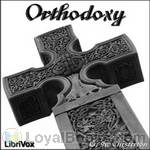 Orthodoxy
Orthodoxy
Orthodoxy is a book that has become a classic of Christian apologetics. In the book's preface Chesterton states the purpose is to "attempt an explanation, not of whether the Christian faith can be believed, but of how he personally has come to believe it." In it, Chesterton presents an original view of the Christian religion. He sees it as the answer to natural human needs, the "answer to a riddle" in his own words, and not simply as an arbitrary truth received from somewhere outside the boundaries of human experience. | |
 The New Jerusalem
The New Jerusalem
“On the road to Cairo one may see twenty groups exactly like that of the Holy Family in the pictures of the Flight into Egypt; with only one difference. The man is riding on the ass.” “The real mistake of the Muslims is something much more modern in its application than any particular passing persecution of Christians as such. It lay in the very fact that they did think they had a simpler and saner sort of Christianity, as do many modern Christians. They thought it could be made universal merely by being made uninteresting... | |
 The Ball and the Cross
The Ball and the Cross
The Ball and the Cross is G. K. Chesterton's third novel. In the introduction Martin Gardner notes that it is a "mixture of fantasy, farce and theology." Gardner continues: "Evan MacIan is a tall, dark-haired, blue-eyed Scottish Highlander and a devout Roman Catholic.... James Turnbull is a short, red-haired, gray-eyed Scottish Lowlander and a devout but naive atheist.... The two meet when MacIan smashes the window of the street office where Turnbull publishes an atheist journal. This act of rage occurs when MacIan sees posted on the shop's window a sheet that blasphemes the Virgin Mary, presumably implying she was an adulteress who gave birth to an illegitimate Jesus... | |
 A Utopia of Usurers
A Utopia of Usurers
“Now I have said again and again (and I shall continue to say again and again on all the most inappropriate occasions) that we must hit Capitalism, and hit it hard, for the plain and definite reason that it is growing stronger. Most of the excuses which serve the capitalists as masks are, of course, the excuses of hypocrites. They lie when they claim philanthropy; they no more feel any particular love of men than Albu felt an affection for Chinamen. They lie when they say they have reached their position through their own organising ability... | |
 Everlasting Man
Everlasting Man
This book needs a preliminary note that its scope be not misunderstood. The view suggested is historical rather than theological, and does not deal directly with a religious change which has been the chief event of my own life; and about which I am already writing a more purely controversial volume. It is impossible, I hope, for any Catholic to write any book on any subject, above all this subject, without showing that he is a Catholic; but this study is not specially concerned with the differences between a Catholic and a Protestant... | |
 Catholic Church and Conversion
Catholic Church and Conversion
Written after his conversion, G.K. Chesterton explains his understanding of Catholicism, and discusses the nature and the process of conversion to the Catholic faith. | |
By: Gautama Buddha (563-483 BC) | |
|---|---|
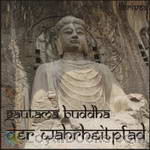 Der Wahrheitpfad (Dhammapadam)
Der Wahrheitpfad (Dhammapadam)
Das Dhammapada ist eine Anthologie von Aussprüchen des Buddha. Dabei sind die Verse so ausgewählt, dass sie den Kern der Lehre des Buddha wiedergeben. Es ist einer der bekanntesten Texte dieser Lehre und findet seine weiteste Verbreitung im südlichen Buddhismus. Dort begleitet es die Schüler des Buddha vom Anfang bis zum Ende ihres Pfades. Darüber hinaus ist es ein Meisterwerk sowohl der frühen buddhistischen Literatur als auch der indischen Tradition des Karvya (Belle Lettre). | |
By: George Barton (1866-1940) | |
|---|---|
 Angels of the Battlefield
Angels of the Battlefield
"Angels of the Battlefield: A History of the Labors of the Catholic Sisterhoods in the Late Civil War" chronicles the compassionate services of these dedicated women during the bitter and bloody U.S. Civil War. These accounts also offer some important historical details, giving some important insights into the people and events of the war. This is the Second Edition, Revised and Enlarged. - Summary by Larry Wilson | |
By: George Berkeley (1685-1783) | |
|---|---|
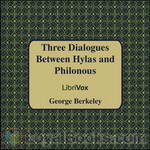 Three Dialogues Between Hylas and Philonous
Three Dialogues Between Hylas and Philonous
Berkeley uses Hylas as his primary contemporary philosophical adversary, John Locke. A Hylas is featured in Greek mythology and the name Hylas is derived from an ancient Greek word for “matter” which Hylas argues for in the dialogues. Philonous translates as “lover of mind.” In The First Dialogue, Hylas expresses his disdain for skepticism, adding that he has heard Philonous to have “maintained the most extravagant opinion… namely, that there is no such thing as material substance in the world.” Philonous argues that it is actually Hylas who is the skeptic and that he can prove it. Thus, a philosophical battle of wit begins. | |
By: George Douglas Watson (1845-1924) | |
|---|---|
 Soul Food
Soul Food
A guide for Christians to walk a godly life. Covering various practical and spiritual topics. | |
By: George F. Dillon (1836-1893) | |
|---|---|
 War of Antichrist with the Church and Christian Civilization
War of Antichrist with the Church and Christian Civilization
The War of Anti-Christ with the Church and Christian Civilization is a book written in 1885 by an Irishman, George F. Dillon, DD. It was republished by Fr. Denis Fahey in 1950 as Grand Orient Freemasonry Unmasked as the Secret Power Behind Communism. The central theme of the book alleges that atheistic Illuminism, through the infrastructure of Grand Orient freemasonry, driven by the ideology of the philosophies laid the foundations for a large scale, ongoing war against Christendom in general and Catholic Church in particular... | |
By: George Frederick Kunz (1856-1932) | |
|---|---|
 Curious Lore of Precious Stones
Curious Lore of Precious Stones
Full title is "The Curious Lore of Precious Stones, being a description of their sentiments and folklore, superstitions, symbolism, mysticism, use in medicine, protection, prevention, religion, and divination, crystal gazing, birthstones, lucky stones, and talismans, astral, zodiacal, and planetary." Just about everything you ever wanted to know about precious stones, aside from their formation, acquisition, and chemical composition. - Summary by TriciaG | |
By: George Frederick Maclear (1833-1902) | |
|---|---|
 Class-Book of Old Testament History
Class-Book of Old Testament History
This is classic book by scholar, educator, theologian and preacher George Frederick Maclear, headmaster of King's College School, London, and later warden of St. Augustine's Missionary College, Canterbury. Each short chapter is a nugget of events and persons of the Old Testament, giving a very accessible overview of history from the Earliest Times to those of Ezra and Nehemiah. | |
By: George Herbert (1593-1633) | |
|---|---|
 Selection from 'The Temple'
Selection from 'The Temple'
George Herbert (April 3, 1593 – March 1, 1633) was a Welsh poet, orator and a priest. Throughout his life he wrote religious poems characterized by a precision of language, a metrical versatility, and an ingenious use of imagery or conceits that was favored by the metaphysical school of poets. He is best remembered as a writer of poems and hymns such as “Come, My Way, My Truth, My Life” and “The King of Love My Shepherd Is.” | |
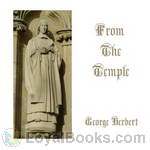 From The Temple
From The Temple
George Herbert was a country minister, and a protégé of the great metaphysical poet John Donne. In The Temple, Herbert combines these two aspects of his training in one of the greatest cycles of religious poetry ever written. This is reading of a selection of these poems. | |
 Country Parson: His Character and Rule of Life
Country Parson: His Character and Rule of Life
George Herbert was an English poet, orator, and priest. In The Country Parson he describes the roles of the priest and offers practice advice to English clergymen about how to fulfill their duties. - Summary by Karen Clausen-Brown | |
By: George Hodges (1856-1919) | |
|---|---|
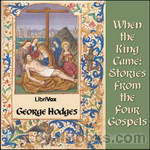 When the King Came: Stories from the Four Gospels
When the King Came: Stories from the Four Gospels
THIS tells how once the King of Glory came from heaven to visit us here on earth and live amongst us; how He was born in Bethlehem and brought up in Nazareth; how He went about telling people of the Heavenly Kingdom, and doing good, ministering to the sick and the poor; how He was misunderstood, and disliked, and even hated, till at last they took Him in Jerusalem and nailed Him to a cross so that He died; and how, after that, He came to life again, and went back into heaven, promising to return. | |
By: George MacDonald (1824-1905) | |
|---|---|
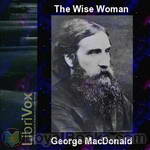 The Wise Woman
The Wise Woman
George MacDonald was an influential Scottish author, poet, and Christian minister. MacDonald’s works (particularly his fairy tales and fantasy novels) claimed the admiration of such authors as J. R. R. Tolkien, C. S. Lewis, and Madeleine L’Engle. The Wise Woman fairy tale was one of MacDonald’s more popular works. This delightful story describes how a woman of mysterious powers pays visits to two very different young girls: one a princess, the other a shepherd’s daughter. Neither girl is left unchanged by the startling events that are unleashed as a result: and the reader is confronted by astonishing fairy-worlds in which the girls are forced to choose between good and evil... | |
 Unspoken Sermons
Unspoken Sermons
George MacDonald was a Scottish author, poet, and Christian minister. In his day he was considered one of the great Victorian authors on par with Dickens, Thackeray, Kipling and the like. His reputation as an author, however, has not fared as well largely because of the ubiquitous and fervent presence of religion throughout his works.MacDonald's theology, though sprinkled liberally throughout his fairly substantial number of books, is perhaps nowhere more palpable than in Unspoken Sermons. These sermons, though by no means amongst the most popular of MacDonald's work, have had theological impact from their first appearance... | |
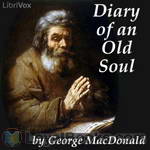 Diary of an Old Soul
Diary of an Old Soul
George MacDonald, a Scottish pastor, wrote these short poems, one for each day of the year, to help him with the severer misfortune he was experiencing. The poems are filled with hope and promises of Christ, yet, he also writes about his doubts. These poems are wonderful to listen to for people of any religion. | |
 Miracles of Our Lord
Miracles of Our Lord
Actions, it is often said, speak louder than words. But in the life of Christ - as George MacDonald shows - both spoke with an equal volume. Much attention is often devoted to what Jesus said while He was on earth, but many in our modern age are puzzled by the miracles. What are we to make of them? MacDonald - wise and gentle as ever - invites us into the miracles as a doorway into the inner life of Christ that we may intimately know Him and His Father. | |
 England's Antiphon
England's Antiphon
"In this book I have sought to trace the course of our religious poetry from an early period of our literary history. ... [I]f its poetry be the cream of a people's thought, some true indications of the history of its religious feeling must be found in its religious verse, and I hope I have not altogether failed in setting forth these indications. My chief aim, however, will show itself to have been the mediating towards an intelligent and cordial sympathy betwixt my readers and the writers from whom I have quoted. In this I have some confidence of success. Heartily do I throw this my small pebble at the head of the great Sabbath-breaker Schism." - From the Preface | |